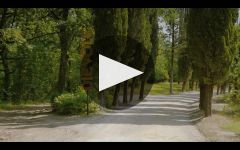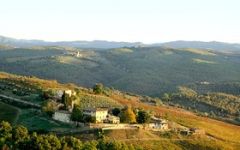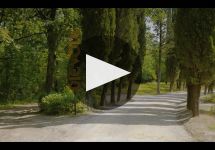Dievole Petrignano Chianti Classico 2021
-
Wine
Spectator -
James
Suckling - Decanter
- Vinous



Product Details
Your Rating
Somm Note
Winemaker Notes
Deep ruby red in color, with a fruity bouquet of distinctive ripe fruit, cherry and blackberry notes. Juicy, full and opulent on the palate with confirmation of the blackberries and ripe fruit. Warming and velvety finish with fine, polished tannins.
Professional Ratings
-
Wine Spectator
Supple and harmonious, this red delivers cherry, raspberry, rose and mineral flavors on an elegant frame. Balanced and fresh, with a lingering aftertaste echoing the fruit and mineral elements. Drink now through 2038.
-
James Suckling
An estery and youthful wine with strawberry ice cream, flowers and some minerals on the nose. Graceful palate with crisp acidity, a medium body and chalky yet ripe tannins. Savory finish.
-
Decanter
All three of Dievole’s vineyard-designated annatas are crafted from young vines, fermented in concrete and aged in untoasted 40-hectolitre casks. Petrignano, which means stony place, boasts the greatest presence of schistose Galestro and tilts northeastward at 350 metres above sea level. The most elegant and complete of the triad, there's a sumptuousness to the dark cherry and blackberry nose. Appealing whiffs of sunbaked stone and allspice interject. Juicy and fresh, the palate boasts sneaky concentration and smooth, velvety tannins, with mouth-cleansing acidity and lively energy. Trails off with rosehip tea.
-
Vinous
The 2021 Chianti Classico Petrignano is a potent wine that shows the wilder side of Sangiovese. Black cherry, gravel, dried herbs, menthol, sage and licorice are front and center. This bold, structured Chianti Classico needs a bit of time to be at its best. It’s an especially potent, tightly wound wine, its mid-weight structure notwithstanding.
Rating: 91+
Other Vintages
2019-
Wine
Enthusiast - Decanter
-
James
Suckling -
Robert
Parker



Dievole. The enchanted valley. At Dievole, good wine is the right answer to the right question, whether for vineyard or wine cellar. A good wine is the perfect union of man and nature. Dievole is an enchanted valley and we are committed to finding the right people. All evaluations, from selecting mother vine stock and clones to vintage planning and innovation in vineyards and wine cellar, are determined by one single objective: uplifting standards in the hope of creating a good wine through character and quality.
Aspiring to perfection is second nature to us Dievole viticulture dates back to the 11th century. The first step taken to cultivate this genetic legacy was to revisit the past found in the historical memory of the farming families. New masters of wine-growing were brought in to counter environmental uniformity and monotony. Its particolar type of terroir includes such ancient classics as Barsaglina, Aleatico, Foglia Tonda, Ciliegiolo, Prugnolo Gentile, Mammolo and Saragiolo. It also covers contemporary classics such as Canaiolo a Raspo Rosso, Malvasia Nera, Syrah, Petit Verdot and the various Sangiovese clones.

Among Italy's elite red grape varieties, Sangiovese has the perfect intersection of bright red fruit and savory earthiness and is responsible for the best red wines of Tuscany. While it is best known as the chief component of Chianti, it is also the main grape in Vino Nobile di Montepulciano and reaches the height of its power and intensity in the complex, long-lived Brunello di Montalcino. Somm Secret—Sangiovese doubles under the alias, Nielluccio, on the French island of Corsica where it produces distinctly floral and refreshing reds and rosés.

One of the first wine regions anywhere to be officially recognized and delimited, Chianti Classico is today what was originally defined simply as Chianti. Already identified by the early 18th century as a superior zone, the official name of Chianti was proclaimed upon the area surrounding the townships of Castellina, Radda and Gaiole, just north of Siena, by Cosimo III, Grand Duke of Tuscany in an official decree in 1716.
However, by the 1930s the Italian government had appended this historic zone with additonal land in order to capitalize on the Chianti name. It wasn’t until 1996 that Chianti Classico became autonomous once again when the government granted a separate DOCG (Denominazione di Origine Controllata e Garantita) to its borders. Ever since, Chianti Classico considers itself no longer a subzone of Chianti.
Many Classicos are today made of 100% Sangiovese but can include up to 20% of other approved varieties grown within the Classico borders. The best Classicos will have a bright acidity, supple tannins and be full-bodied with plenty of ripe fruit (plums, black cherry, blackberry). Also common among the best Classicos are expressive notes of cedar, dried herbs, fennel, balsamic or tobacco.
